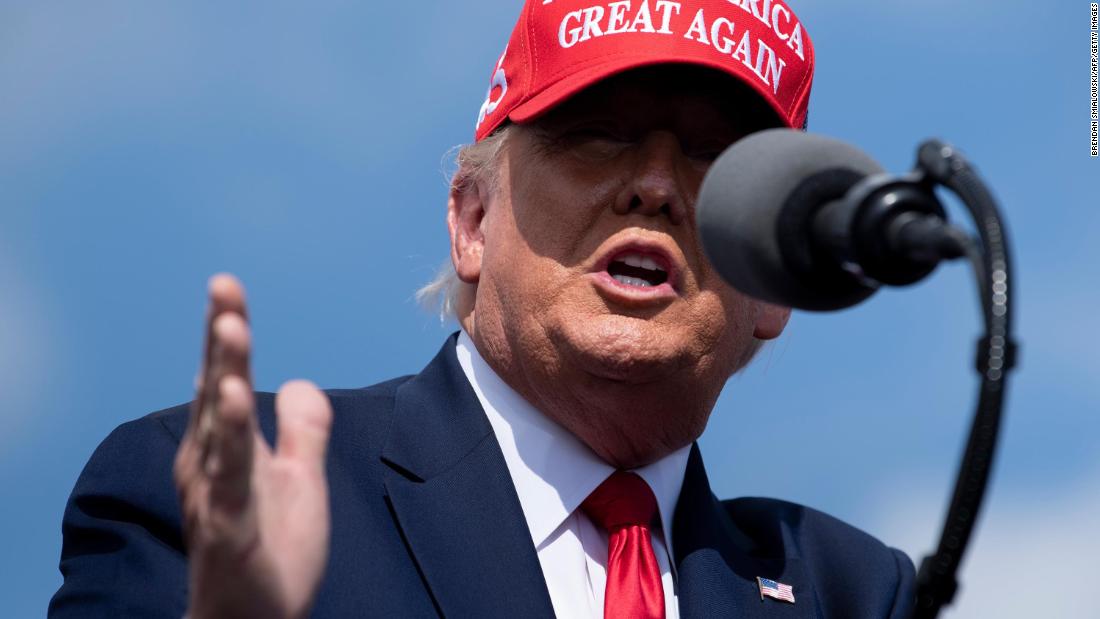
It happened four years ago when Donald Trump scored an Electoral College victory with his turn-back-the-clock campaign to Make America Great Again. He'll have trouble pulling it off again.
That's partly because the pace of demographic change keeps shrinking the America Trump evokes in the rear-view mirror. More than that, his presidency has exposed the inadequacy of yesterday's prescriptions for the challenges America now faces.
Anxiety about change played a central role in putting Trump in the White House. As the first Black president, Trump's predecessor Barack Obama embodied the population shifts that the Census Bureau says will turn Whites into a minority of the American population within a quarter-century. Opinion research into the 2016 contest showed racial resentment as a defining feature of Trump's political base.
He also benefited from the discomfort of some voters over the prospect that Hillary Clinton, for decades on the leading-edge of feminist advances, would follow Obama's breakthrough to become the first woman president.
The blue-collar, less-educated, rural, conservative Christian Whites who fueled Trump's victory keep shrinking as a proportion of the electorate. Whites will decline from 69% of eligible voters in 2016 to 59% by 2036 as the Hispanic and Asian populations rise, according to projections by the States of Change collaboration between the Brookings Institution and Center for American Progress.
Rising education levels will shrink the proportion of Whites without college degrees from 46% to 34% over that same period. In the last four years alone, Cook Political Report analyst Dave Wasserman has calculated, demographic shifts would be enough to tip the 2020 election to Joe Biden even without changes in the partisan preferences of any group.
A referendum on Trump himself
But preferences have in fact changed. Trump's unapologetically backward-looking vision has driven significant elements of society away.
Business leaders recoiled in 2017 when Trump praised "both sides" after violent clashes between white supremacists and counter-protestors in Charlottesville, Virginia. In a debate with former Vice President Joe Biden five weeks ago, the President declined an invitation to condemn white supremacists.
Military leaders broke this summer with his defense of Confederate symbols and use of force against racial justice protestors. White suburbanites spurned his "law and order" appeals to the racist hierarchy of the septuagenarian President's upbringing. College-educated White women have defected en masse from a man offering 1950s-vintage promises to "put your husbands back to work."
His insular America First economic priorities have similarly faltered in the political marketplace.
Trump never attempted to fulfill his 2016 talk of deporting all of America's 11 million undocumented residents, which politicians of all stripes acknowledge would produce economic and humanitarian disaster. Congress declined to finance the Mexican border wall he championed as a bulwark against the swelling Hispanic population.
Trump's pledge to "bring back coal" has failed to arrest the transition to cleaner energy as America and the world adjust to the reality of climate change he denies. In February, government figures show, renewable sources generated more American electricity than coal did.
Trump's tariffs have shown no signs of restoring a bygone era of American manufacturing dominance. The Federal Reserve found that, with 75,000 jobs lost, the manufacturing sector lapsed into recession in 2019. Trump's blue-collar base has eroded this fall, to Biden's benefit, in the industrial Midwest.
Trump trailed Biden in the polls long before the pandemic hit. When it did, he both downplayed the crisis publicly and embraced his party's old-school view of a limited federal role in response.
A Supreme Court bet
The failure of his approach -- dramatized this weekend by coronavirus spikes in electoral battlegrounds -- poses a giant obstacle to any last-minute comeback.
For Trump and his party, the campaign's closing days have strengthened one lever for resisting change beyond the voting booth. New Justice Amy Coney Barrett, who has bolstered the Supreme Court's conservative majority to 6-3, refused in her confirmation hearings to specify her views on divisive issues from abortion to gay marriage to climate change.
Nor would Barrett commit to recusing herself from 2020 election litigation in which Trump's trailing campaign seeks to limit ballot-counting. That has given Republicans hope and Democrats fear that the Supreme Court might intervene once again seal a presidential election outcome.
It happened in 2000, when a Republican-friendly Supreme Court secured the Electoral College victory of George W. Bush. But that case, in which justices divided along ideological lines to halt Florida's recount, involved just a single state.
This election presents a dramatically different picture. Biden leads by a wide margin nationally, surveys show, but also by narrower margins in more than enough battleground states to win.
Barring comprehensive polling failures, that gap appears beyond the scope of judicial intervention. Available evidence indicates that, two days before vote-counting begins, the clock on Trump's throwback presidency has run out.
"and" - Google News
November 01, 2020 at 06:55PM
https://ift.tt/324qya6
America again has a choice between the past and the future - CNN
"and" - Google News
https://ift.tt/35sHtDV
https://ift.tt/2ycZSIP
And
Bagikan Berita Ini














0 Response to "America again has a choice between the past and the future - CNN"
Post a Comment